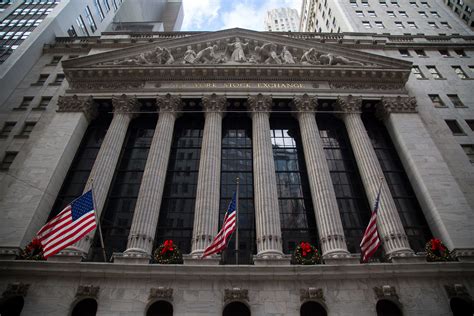The world of banking has long been known for its resilience in the face of economic fluctuation, regulatory changes, and political shifts. In recent years, under the U.S. administration led by President Donald Trump, the financial landscape experienced a significant transformation that reverberated through Wall Street and beyond.
As the dawn of a new era unfolded, one executive at JPMorgan Chase, a prominent figure in the banking industry with insights into market trends and dynamics, shared his perspective on how U.S. banks navigated through the turbulent waters under Trump’s leadership.
“In go-mode”
“In go-mode” – a phrase that encapsulates the essence of American banks as they adapted to the changing climate spurred by policy adjustments and geopolitical influences. These words echoed across boardrooms and trading floors, reflecting an atmosphere charged with anticipation and strategic decision-making.
The deregulatory agenda championed by President Trump had a profound impact on financial institutions across the country. With relaxed oversight measures and tax reforms reshaping corporate landscapes, banks found themselves in uncharted territory where opportunities intertwined with challenges.
The Evolution of Banking
To understand this period fully, we must delve into the evolution of banking within the broader context of political governance. The symbiotic relationship between Washington D.C. policymakers and Wall Street titans often sets the tone for market behavior and investment strategies.
Under President Trump’s administration characterized by pro-business policies and fiscal stimulus initiatives, U.S. banks embraced an ethos of agility and adaptability to leverage newfound freedoms while mitigating risks associated with increased independence from regulatory constraints.
Expert Insights
Insights from industry experts shed light on how executives like those at JPMorgan viewed this transformative period. According to leading analysts, the shift towards a more permissive regulatory environment created both opportunities for growth and concerns about potential systemic vulnerabilities arising from loosened safeguards.
Navigating these uncharted waters required a delicate balance between innovation and prudence as banks recalibrated their risk management frameworks to align with evolving market conditions. The concept of being “in go-mode” captured this duality – a sense of urgency tempered by calculated decision-making processes aimed at capitalizing on emerging trends.
A New Paradigm
The narrative that emerged during this era painted a picture of resilience amidst uncertainty as financial institutions reimagined their operational models in response to external forces shaping public policy agendas. While some critics voiced apprehensions about potential risks stemming from deregulation, proponents argued that increased flexibility fostered innovation and competitiveness within an increasingly globalized economy.
As U.S. banks entered what could be described as a “golden age” marked by unprecedented growth trajectories fueled by favorable economic conditions, executives like those at JPMorgan spearheaded initiatives aimed at harnessing digital technologies, enhancing customer experiences, and optimizing resource allocation strategies to stay ahead in an ever-evolving marketplace.
In conclusion, reflecting on JPMorgan executive’s observations regarding U.S. banks being “in go-mode” under President Trump’s tenure opens windows into an epoch defined by dynamic shifts in regulatory landscapes intersecting with financial sector realities.

